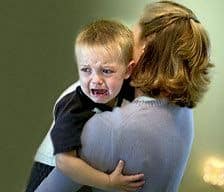April News
Welcome to another edition of Daisy Hill ELC News!
We have had another great month with some exciting events and activities.
A quick recap for things you may have missed :
* Referral Incentive- Get TWO weeks FREE when you refer a friend that enrols
* Make sure you are signing your children in EVERY DAY...If this is a problem, please see me :-)
*Welcoming our new staff: Andrea- Kindergarten Teacher, Telaine- Kindergarten Educator, Jane- Kindergarten Support
* Please ensure that your children's belongings are clearly labelled.
*All children are to wear a hot in our outdoor environment, please enquire at the front office about purchasing a Daisy Hill ELC hat if you would like, otherwise a hat from home must come with your child everyday.
* On Friday the 11th of May, from 2-5pm , we would like to invite all the mums and grandmas to this year's Mother's Day Afternoon tea. We are going to be opening our centre to the wider community to take part in some mothers day pampering as well, so we look forward to seeing you all there! **(More details to come)
Anzac Day is a time for the community to come together to remember and recognise the service and sacrifice of members of the Australian Defence Force. Originally a commemoration of the landing of Australian and New Zealand forces on Gallipoli on 25 April 1915, Anzac Day is a public expression of gratitude and reflection resonates to the present day.
25/4/15- Anzac Day Public Holiday- CENTRE IS CLOSED
Yummy curried sausages
These yummy curried sausages are a classic that the whole family will love!!
Ingredients:
- 6 thick sausages
- 1 onion, sliced
- 1 carrot, chopped
- 1 potato, diced
- 1 tbsp tomato paste
- 1 tsp curry powder
- 2 cups water
- 1 cup frozen corn
- 1 cup frozen peas
.
What Is Separation Anxiety?
In early childhood, crying, tantrums, or clinginess are healthy reactions to separation and a normal stage of development. Separation anxiety can begin before a child's first birthday, and may pop up again or last until a child is four years old. However, both the intensity level and timing of separation anxiety vary tremendously from child to child. A little worry over leaving a parent is normal, even when your child is older. You can ease your child's separation anxiety by staying patient and consistent, and by gently but firmly setting limits.
How to ease separation anxiety
Practice separation. Leave your child with a caregiver for brief periods and short distances at first. As your child gets used to separation, you can gradually leave for longer and travel further.
Develop a quick "goodbye" ritual. Rituals are reassuring and can be as simple as a special wave through the window or a goodbye kiss. Keep things quick, though, so you can:
Leave without fanfare. Tell your child you are leaving and that you will return, then go—don't stall or make it a bigger deal than it is.
Try not to give in. Reassure your child that they will be just fine—setting consistent limits will help your child's adjustment to separation.
For more information please speak to your child/rens teacher. Separation anxiety is normal and you are not the first or last to experience it, you are not alone and you are doing a great job







